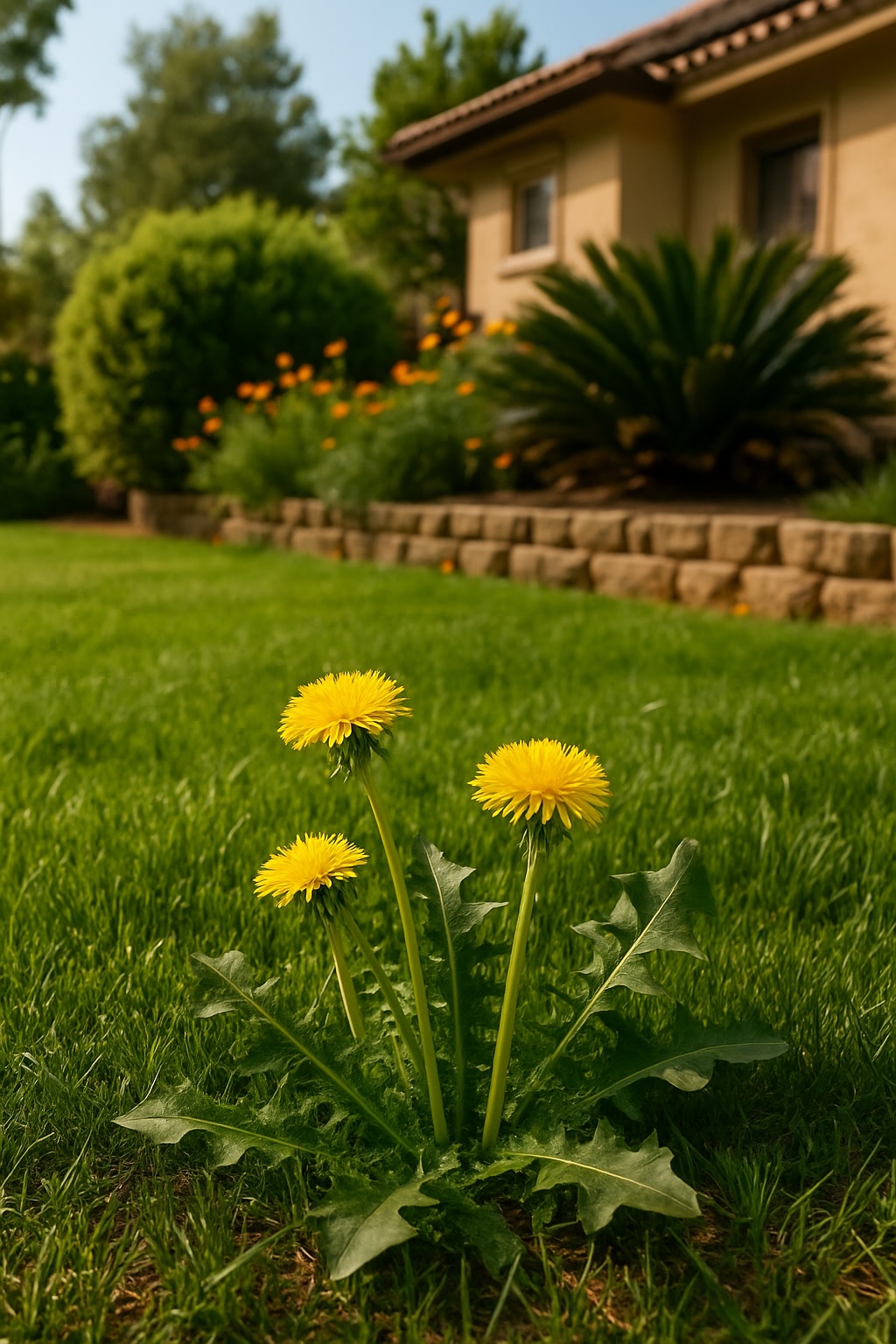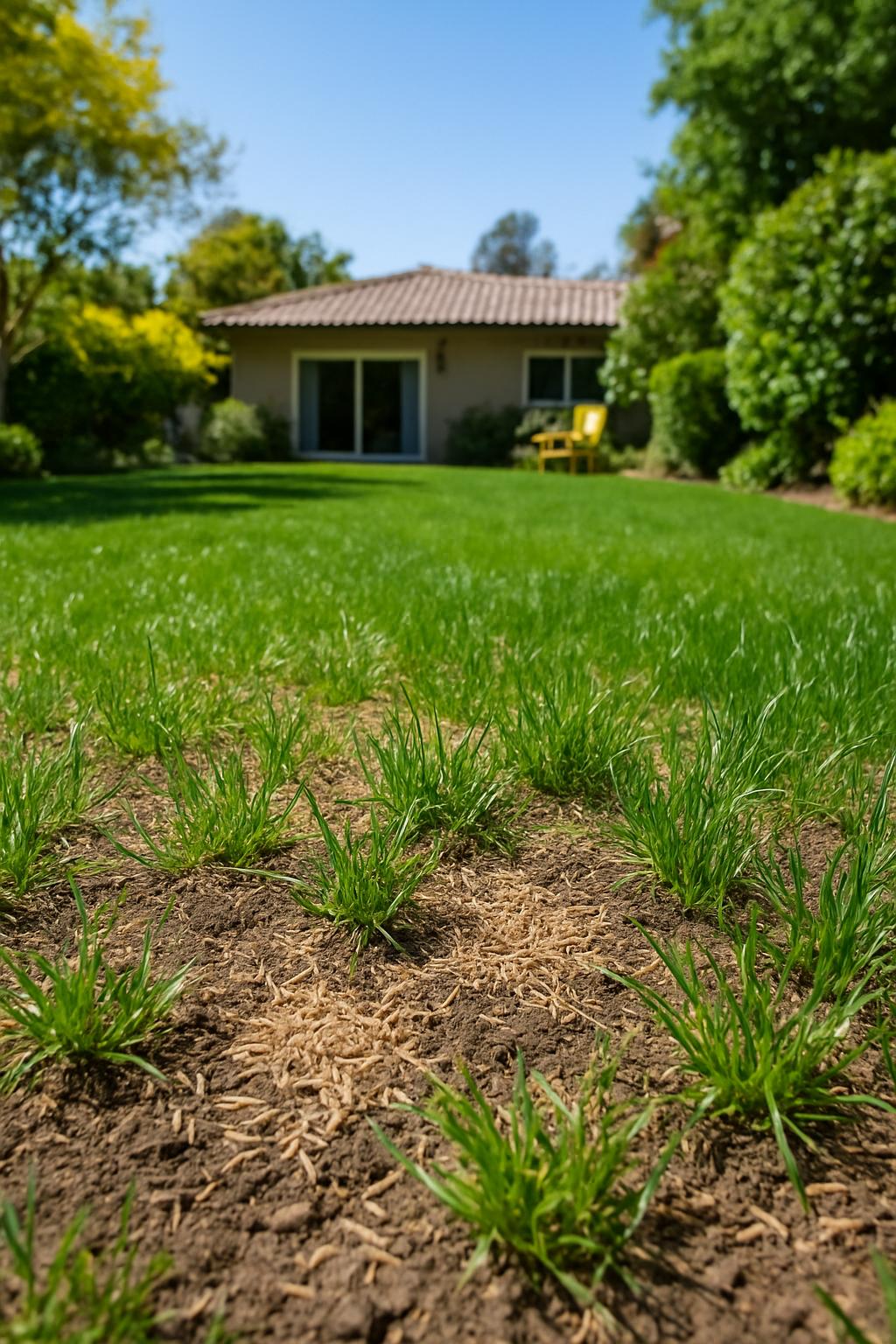
San Diego’s mild, rainy spring season provides perfect conditions for weeds to invade lawns and garden beds. Whether you’re dealing with crabgrass, dandelions, or clover, spring is the ideal time to act before weeds can spread and set seed. With the right strategies, you can keep your yard lush, healthy, and mostly weed-free—all season long.
Why Spring Weeds Are a Problem in San Diego
In Southern California, winter rains and mild temperatures wake up dormant weed seeds. Many common weeds thrive before your warm-season lawn and ornamentals have fully recovered from winter, making it easier for weeds to get a head start. Left unchecked, spring weeds will compete for water, nutrients, and sunlight, often crowding out desirable grass and plants.
Identifying Common Spring Weeds
- Annual bluegrass (Poa annua): Bright green patches, shallow roots, and seedheads in spring.
- Crabgrass: Broad-leafed, low-growing, with a spreading habit—often invades thin or bare spots.
- Dandelion: Yellow flowers and fluffy seed heads, with deep taproots.
- Chickweed and clover: Spreading groundcovers, easy to pull but quick to regrow.
- Oxalis (“sourgrass”): Small yellow flowers, shamrock leaves—can spread aggressively.
Prevention Strategies for a Weed-Free Lawn
- Mow high: Taller grass shades out weed seedlings and gives your lawn an advantage.
- Mulch garden beds: Apply 2–3 inches of mulch in flower and vegetable beds to block light and prevent weed growth.
- Water deeply, but infrequently: Frequent, shallow watering encourages weeds. Deep, less frequent watering favors grass roots.
- Repair bare spots: Overseed thin lawn areas in early spring to prevent weeds from moving in.
- Don’t let weeds go to seed: Remove weeds before they flower and set seed for next season.
Best Weed Control Methods (Manual, Organic, Chemical)
- Hand-pulling: For small infestations and annual weeds, hand-pulling is effective, especially after rain.
- Organic options: Use corn gluten meal as a pre-emergent, or vinegar-based sprays for young broadleaf weeds (avoid grass).
- Chemical control: Spot-treat persistent weeds with a selective post-emergent herbicide. Always follow label directions, and avoid applications before rain.
When to Act: Timing and Local Climate Tips
- Apply pre-emergent herbicides in late winter or very early spring, before soil warms and weed seeds germinate.
- Pull weeds after a rainstorm or watering session—roots come out easier.
- Keep an eye out for new weeds after mowing or landscaping projects.
Frequently Asked Questions
- Are weed barriers a good idea? For permanent beds, fabric weed barriers can help, but they’re not recommended for lawns or veggie gardens.
- Is mulching really worth it? Yes! Mulch saves water, suppresses weeds, and builds healthy soil as it breaks down.
- Should I fertilize after weed removal? Spring feeding can help your lawn and ornamentals recover from weed competition.



